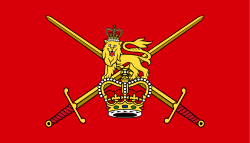This article relies largely or entirely on a single source .(March 2013) |
 |
| British Army lists |
|---|
| French Revolutionary and Napoleonic Wars |
| Victorian era |
| First World War |
| Second World War |
| Regiments |
| Officers |
| Other |
This is a list of British Army cavalry and infantry regiments that were created by Childers Reforms in 1881, a continuation of the Cardwell Reforms. It also indicates the cavalry amalgamations that would take place forty years later as part of the Government cuts of the early 1920s.